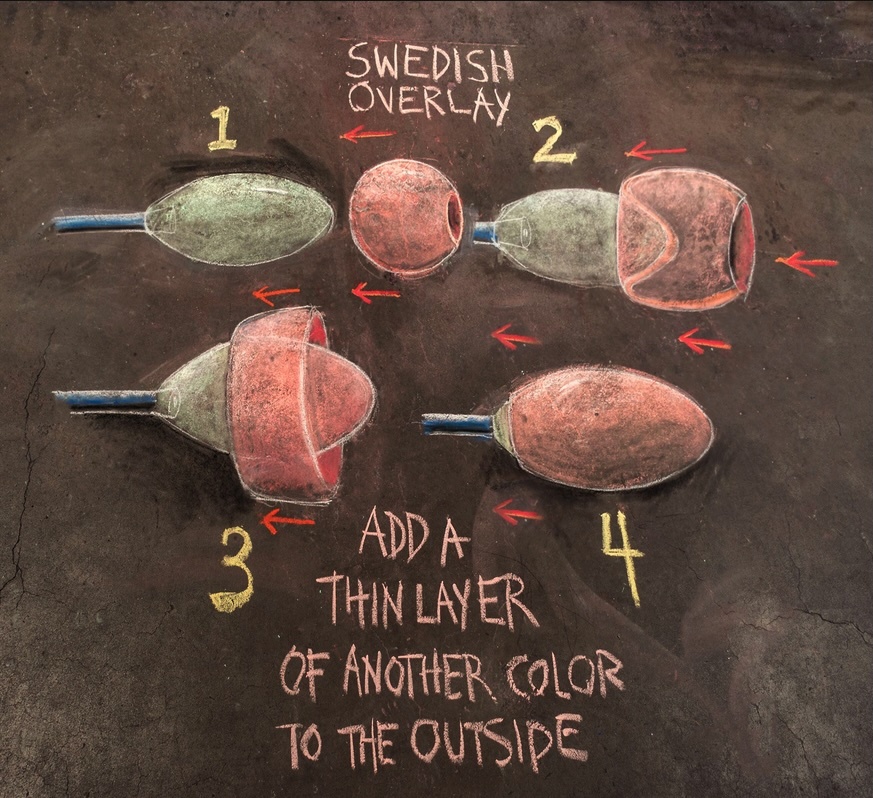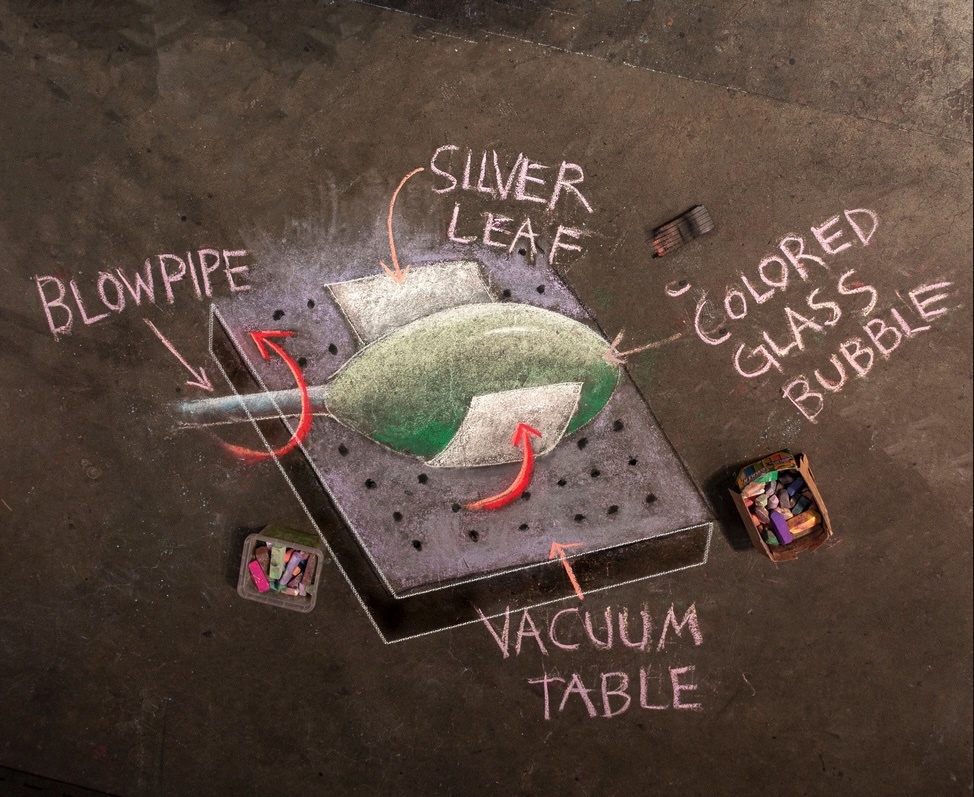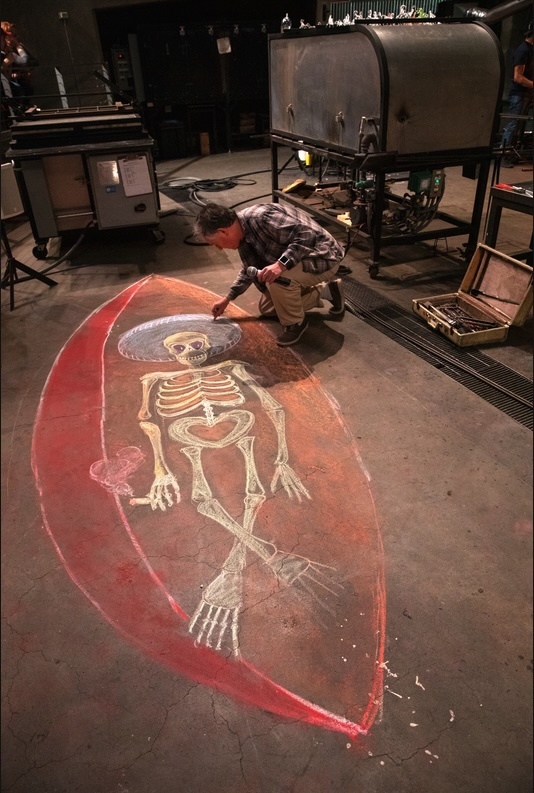Walter Lieberman has always loved to draw. Though he initially decided to study tech at university, art would prove to be his calling. After a friend showed him the glassblowing process, Walter left Carnegie Mellon and his plans for a computer-studies degree to study under Dan Dailey at Mass Art. His mother's graduation gift of a Pilchuck summer course in 1978 sparked a connection to the glass school and the dynamic community of the Pacific Northwest. Though he grew up in New York City, Walter settled in Seattle, where he became a fixture in the glass scene, supporting himself by selling his artwork, and enjoying regular exhibitions at Traver and other galleries for his own work and his frequent collaborations with Dick Weiss.
In 2006, seeking more regular income, Walter successfully applied for a job as a commentator at the Museum of Glass, and this move would transform his art career from working in glass to working in chalk on cement. Walter's elaborate chalk drawings he draws before live audiences to help explain the processes on view at the Museum of Glass hotshop demos have become recognized as more than diagrams of process, but artworks in their own right. This year, the Museum of Glass's Jabari Owens-Bailey has elevated Walter's drawings off the floor, literally, putting them on view as wall-hung panels through January 2026 in the exhibition titled "Are you the guy who does the chalk drawings in the Hot Shop?"
Curator Owens-Bailey, who holds the title of Curatorial Education Program Manager at the museum, wrote an in-depth article on Walter's work for the Fall 2025 edition of Glass (#180). Both he and Walter will be the featured guests for the Glass Quarterly Live September 5th edition (2 PM EST), which is a Zoom meeting free and open to the public (with a recording posted afterwards). (Look for the posting on the Hot Sheet for the link to the live broadcast).
The Glass Quarterly Hot Sheet caught up with Walter by phone to talk a bit more about his remarkable art career, and we are honored to present the interview and some of his favorite chalk drawings.
Glass Quarterly Hot Sheet: Your drawings function on so many levels, but one of them is to make complicated processes very clear, and not intimidating. Where did you learn your particular style?
Walter Lieberman: I always drew, but I did take figure drawing at MassArt, as I had done at Carnegie-Mellon. In glassblowing, I didn't really draw too much, maybe just a simple profile on the shop floor. But it wasn't until I was faced with the challenge of explaining it to other people at the museum that I really got involved in it.

Glass: There's something about the style of the drawings, though, that make them especially clear and also enjoyable to look at. Things like your use of color and that you're doing perspective drawings, sometimes with a sequence or sound effects, even!
Walter: I like to say that my first drawing instructor was actually Mad magazine, when I was really young I wanted to be a cartoonist, when I was a teenager my ambition was to draw psychedelic posters for bands. I learned to draw from copying comics as a kid.
Sometimes I try to make the drawings a little on the lighter side, in terms of intent because a lot of people who come to the museum can be intimidated because they don't frequent art museums. I ask if they have questions, and make it feel it’s not always that serious, that you can have fun here and enjoy it and be comfortable with it.

Glass: Is it important that the audience sees you doing the actual drawing in real time? That is definitely unique among the many places that now offer glassblowing demos to the public, that you add this additional layer and that you're doing it by hand.
Walter: Kneeling right down there on the floor, for me, anyway, it's important to the process of drawing at that scale. It's really physical, you swing your arms around, you have to walk over to the other side, more physical than drawing on paper, which can be more cerebral. At the Museum of Glass, the audience sees the physicality as the thing takes shape. Now sometimes I draw in advance if it’s especially complicated because I’m still on the clock as a tour guide, and I can’t leave the audience alone for half an hour while I draw. It's been really good for me as an artist because it forces me to draw spontaneously.
To learn more, please join us for Glass Quarterly Live, a Zoom conversation with Walter Lieberman and Jabari Owens-Bailey on September 5, 2025 at 2 PM EST (11 AM PST).
This link allows you to join the event live: https://us06web.zoom.us/j/8585...



